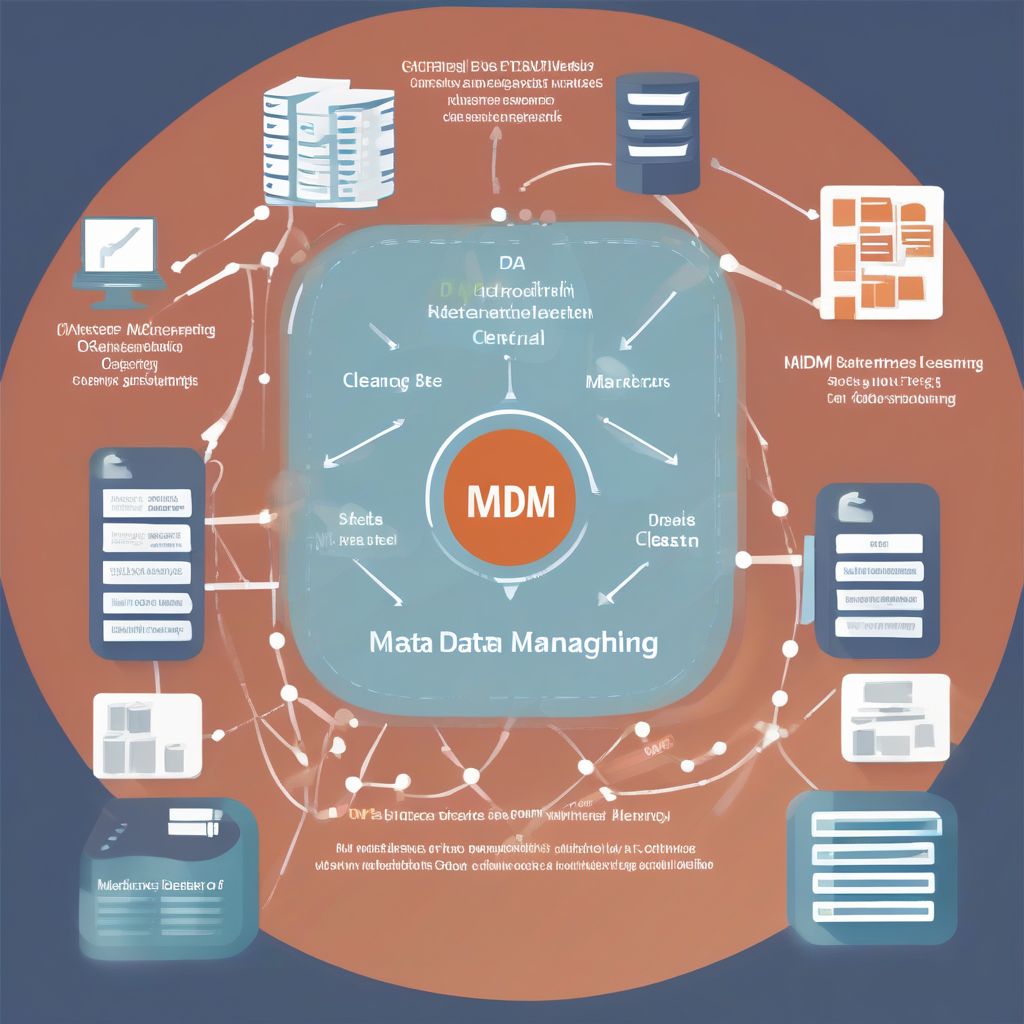In today’s data-driven world, businesses are swimming in a sea of information. But often, this data is siloed across different departments and systems, creating inconsistencies and hindering informed decision-making. This is where Master Data Management (MDM) comes in as the lifeboat your business needs.
What is Master Data Management (MDM)?
Imagine having a single, trusted view of your crucial business data, like customer information, product details, or supplier records. That’s precisely what MDM delivers. It’s a comprehensive approach to managing an organization’s most critical data assets, ensuring accuracy, consistency, and accessibility across all systems and applications.
data.smbtechconsultants.com/wp-content/uploads/2024/07/master-data-management-diagram-66a331.jpg" alt="Master Data Management Diagram" width="1024" height="1024">Master Data Management Diagram
Key Components of MDM:
- Data Integration: MDM breaks down data silos by consolidating information from various sources, eliminating discrepancies and redundancies.
- Data Quality Management: It enforces data standardization, validation, and enrichment rules, guaranteeing accuracy and reliability.
- Data Governance: MDM establishes clear roles, responsibilities, and processes for managing master data throughout its lifecycle, ensuring accountability and compliance.
- Data Security: Robust security measures protect sensitive master data from unauthorized access and potential breaches.
The Importance of Master Data Management
Why is MDM crucial for your business’s success?
- Improved Data Quality: Accurate, consistent data leads to better decision-making, minimizing costly errors caused by faulty information.
- Enhanced Operational Efficiency: Streamlined data management processes save time and resources, allowing teams to focus on strategic initiatives.
- Increased Revenue Opportunities: A 360-degree view of customers enables personalized marketing campaigns, targeted product recommendations, and improved customer experiences, driving sales and loyalty.
- Better Regulatory Compliance: MDM helps organizations comply with data privacy regulations by providing a centralized system to manage and protect sensitive information.
Common Questions about MDM:
1. What are the different types of MDM solutions?
There are primarily two types:
- Consolidation-based MDM: Creates a single, centralized repository (“golden record”) for master data.
- Coexistence-based MDM: Establishes a “virtual” master data view without physically consolidating data in one place.
The choice depends on your organization’s specific needs and architecture.
2. What are some common challenges in implementing MDM?
- Data Silos and Integration Issues: Overcoming technical and organizational barriers to data consolidation.
- Data Quality Issues: Addressing inconsistencies, inaccuracies, and missing data elements.
- Lack of Data Governance: Establishing clear ownership, processes, and policies for master data management.
3. What are some popular MDM tools available?
- Informatica MDM
- IBM InfoSphere Master Data Management
- SAP Master Data Governance
- Microsoft Dynamics 365
- Oracle Enterprise Data Management
These tools offer various features and functionalities to cater to different business requirements.
Conclusion
Master Data Management is no longer a luxury but a necessity for organizations striving for data-driven success. By investing in MDM, businesses can unlock the true potential of their data, improve decision-making, enhance operational efficiency, and gain a competitive edge. As you navigate the increasingly complex data landscape, implementing a robust MDM strategy will be crucial for ensuring your organization thrives in the years to come.



